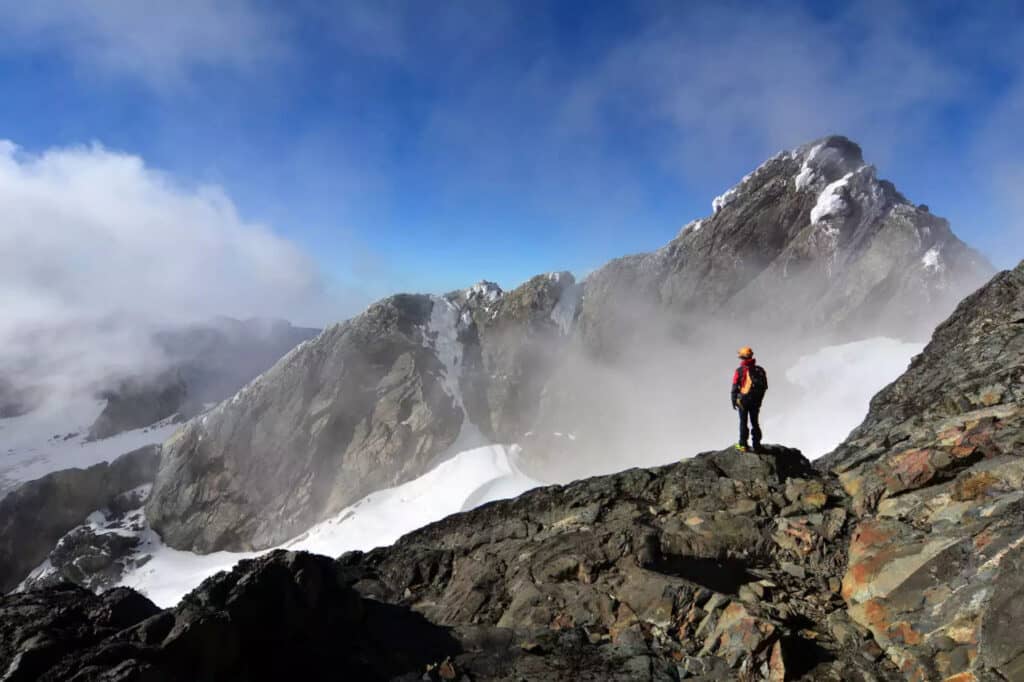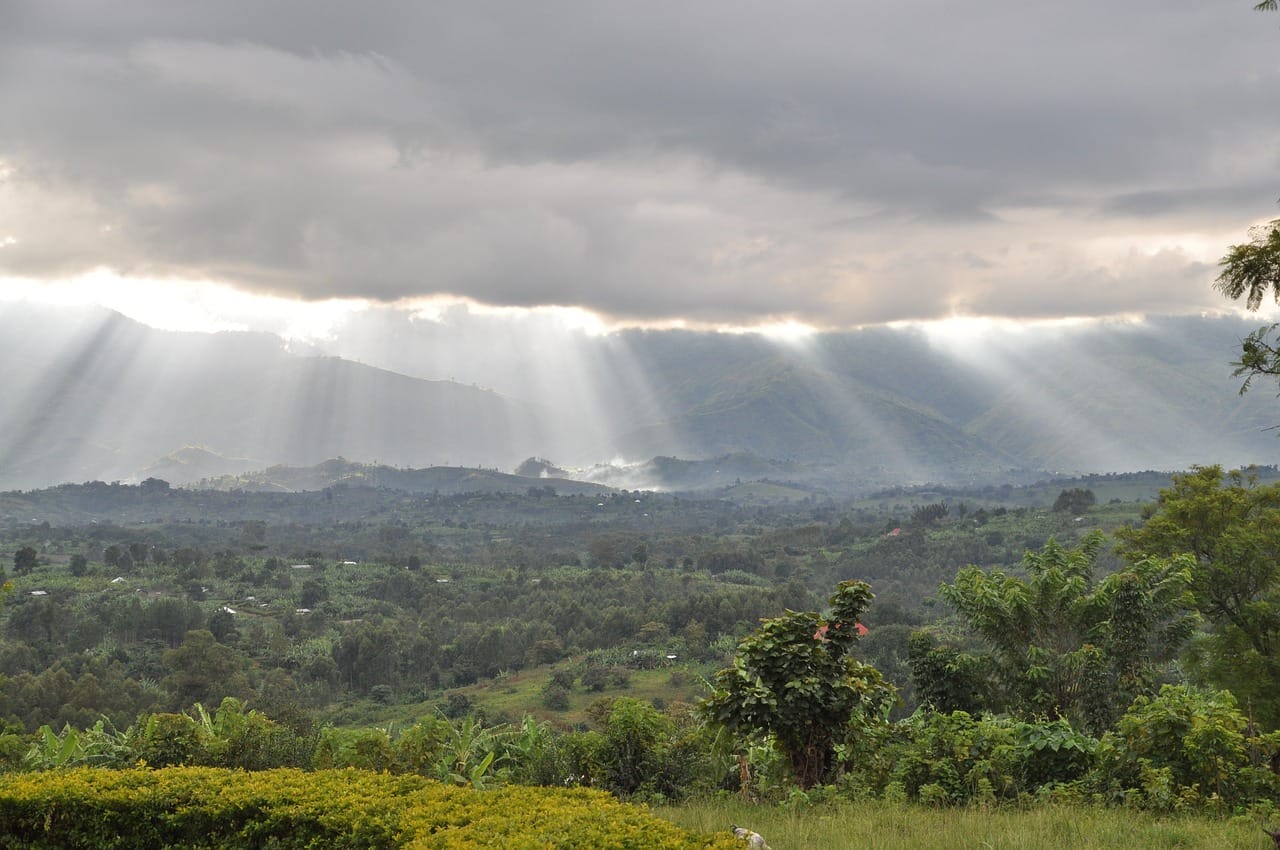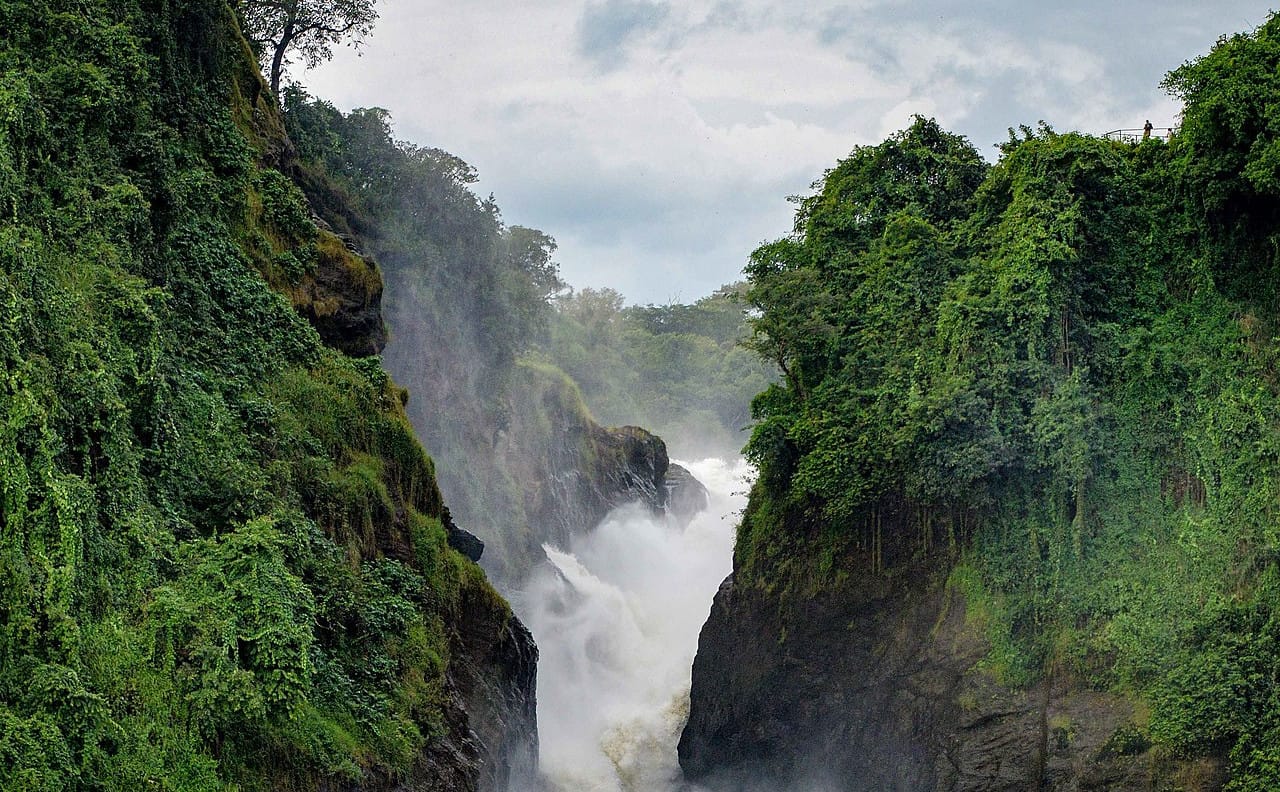Uganda Destinations
Mountain Climbing
Mount Rwenzori National Park
One of the most thrilling and difficult mountain ranges in the world to travel is the Rwenzori Mountains. You can enter a mysterious realm made up of 996 square kilometers of fanciful vegetation, lakes, rocky outcrops, cliffs, high glaciers, and snow-capped peaks. The tallest peak, Mount Stanley’s Margherita Peak, is 5,109 meters; nonetheless, this is still the fourth-highest peak in Africa. The height of the summits may not equal that of taller mountains elsewhere in the world. However, their inaccessibility, erratic weather patterns, shockingly diversified vegetation, remoteness, vistas, and sparse visitor populations all excite intrepid hikers seeking a really unique experience. Listed as a national park in 1991, a World Heritage Site in 1994, and a Ramsar site in 2008, the Rwenzori Mountains have also received other recognitions. These classifications attest to the mountains’ significance in science around the world. The fact that the name “Rwenzori” loosely translates to “Rainmaker” demonstrates the significance of the mountains to Central Africa. The mountains receive about 3 meters of rain annually, which contributes to the humid climate. As a result, the highest peaks are covered with snow and ice and the lower slopes are lush with plants. Climbers must still negotiate ice barriers and substantial snowfall to reach the peaks during the wet season months, despite the glaciers’ tremendous retreat during the past century as a result of climate change.


Adventure
Murchison Falls
Murchison Falls, often referred to as Kabalega Falls, is a waterfall in Uganda that is located near the top of Lake Albert on the Victoria Nile. The massive, ancient lodge's stone structure rises out of the dense, overgrown forest in the center of Murchison Falls National Park. All that remains of the formerly majestic Pakuba Lodge, which overlooked Lake Albert, is the shell, replete with a blue-tiled swimming pool stained pink by algae. Spoken remnants of a dark past meander through the abandoned buildings and vacant lawns. Idi Amin, the former dictator of Uganda, used Pakuba as his favorite retreat where he congregated with his inner circle to scheme and plan their hegemony over the local populace.


Adventure
Mount Elgon National Park
Fourth-highest peak in East Africa and an extinct volcano, Mount Elgon (4321 m) is situated in eastern Uganda and Kenya. 1147 km2 of the mountain are within the park’s limits. The majority of this region is covered with typical afro-montane flora, including a bamboo forest and enormous groundsels. Mt. Elgon is viewed by many tourists as an exhilarating substitute for some of the more difficult climbs in East Africa. With a milder temperature and lower height, it offers many of the same attractions. The summit can be climbed without the use of any specialized gear or technical climbing expertise. Visitors are mesmerized by the caves, hot springs, and waterfalls on its slopes. Mt. Wagagi, the mountain’s highest summit, is reachable by footpath. To view the Suam Gorge and the hot springs, they can either walk around the caldera’s rim or descend to the crater bottom. Although Mount Elgon is a volcano, it hasn’t erupted in about three million years and is thought to be extinct at this point. It’s a lone mountain with long, mellow slopes that are broken up by rivers and cliffs that are quite steep.


Snow Adventure
Queen Elizabeth National Park
The best site to watch lions, especially the Tree Climbing lions, is in Queen Elizabeth National Park, Uganda’s most well-known savanna park, which makes it the ideal location for a Uganda Wildlife Safari. It takes pride in having the greatest range of habitats in the nation, including lakes, savannah grasslands, woodlands, and wetlands, which are home to the greatest number of large mammals. The most visited savannah reserve in Uganda is Queen Elizabeth National Park, which also offers the most diversity of species of any park in the country. There are many different types of habitats, such as marshes, lakes, woods, and grassland savannah. Numerous large mammals and primates can be found in this environment. Chimpanzee tracking is accessible, and four of the Big Five are present (the rhino is absent). The proximity of Queen Elizabeth National Park to the equator guarantees consistently mild weather all year long. The two Wet seasons (March to May and August to December) in the region are characterized by intense rain that renders certain routes inaccessible. There isn’t a designated dry season, however from January to February and June to July, the amount of rain drops off substantially, if not always completely. The days of the Wet seasons (March to May and August to December) are frequently marked by brief but intense downpours, yet this is also when the park’s surroundings are exquisitely lush and you may welcome migratory species as they pass through. Visit the park during the dry months when the trails are more stable for chimpanzee trekking, nevertheless.


Forest Tours
Kibale National Park
The Kanyanchu Primate Walk is the most well-liked excursion in Kibale. The headliners of this twice-daily performance are chimpanzees, although thirteen species might be sought and a fair variety of daytime monkeys are almost always seen. The Kanyanchu Primate Walk is the most well-liked excursion in Kibale. The chimpanzees on this trail are the main attraction, however, 13 species can also be sought after and a good variety of daytime monkeys are frequently seen. Since 1993, Kanyanchu’s chimps have been tracked, and the chances of finding them are very good. Depending on a number of variables, guided tours typically take three hours and begin at 8 a.m. and 2 p.m. With the greatest variety and density of primates in East Africa, Kibale Forest National Park is one of the best safari locations in Africa for chimpanzee trekking safaris. Within its 795km2 land area, which has the most magnificent and diverse tracts of tropical forest in all of Uganda, live 13 species of primates, including chimpanzees. On the elevated Fort Portal plateau, which is in the park’s center and north, the forest cover predominates. The highest point in the park, Kibale, is located at 1590 meters above sea level.


Forest Tours
Kidepo Valley
Kidepo and Narus, two rivers in the park, dry up during the dry season, leaving only pools for the animals to inhabit. The Karamojong, a pastoral group resembling the Maasai of Kenya, live close to the park, as do the IK, a hunter-gatherer community whose future is in jeopardy. Kidepo Valley National Park is located around 700 kilometers from Kampala in the rough, semi-arid lowlands between Uganda’s borders with South Sudan in the north-west and about 5 kilometers from Kenya’s eastern border. It was established as a national park in 1962 and is home to over 77 different species of mammals and a plethora of big game. The park’s wetlands and remaining lakes in the expansive Narus Valley close to Apoka are the only sources of permanent water throughout the dry season. With its dense concentrations of Lion, Buffalo, Elephant, and other comparable angulates, the Narus Valley is the park’s main game watching spot. These seasonal oases, along with the wide, savannah environment, make this the case. Elephant numbers in Kidepo have increased dramatically from 200 in the middle of the 1990s to 650–1000 now. Currently, 10,000–15,000 African buffaloes are thought to exist.The Rothschild Giraffe is remarkable for having produced more than 50 offspring from a population of three in the middle of the 1990s, as well as a number of additional individuals through translocation.


Forest Tours
Lake Mburo
Lake Mburo National Park, which is conveniently located in western Uganda, is undoubtedly one of the most remarkable safari locations you must see when on an African safari. The smallest of Uganda’s savanna national parks, it is the closest national park to Kampala at 371 square kilometers and is situated in the Mbarara district. It has a large wetland, lovely scenery, and is the only national park with an entire lake, making it famous for its biodiversity. A trip to this unspoiled protected area is worthwhile if you want to experience the best of African wildness. The districts of Mbarara, Kiruhura, and Isingiro encircle this magnificent park. In 1933, Lake Mburo National Park was established. Located in western Uganda, 228 kilometers (approximately three and a half hours’ drive) from Kampala, Lake Mburo National Park is situated between the towns of Masaka and Mbarara. The Mbarara road leads into the park through two gates. The turning to Nshara gate is 13 kilometers past Lyantonde while approaching from Kampala. At Sanga Trading Center, 27 kilometers past Lyantonde, there is a junction leading to Sanga Gate. Both crossroads have prominent signage. From either gate, a 20-minute drive will take you to Rwonyo.


Forest Tours
Semuliki National Park
Semuliki National Park, which spans 220 square kilometers (22,000 hectares), was established in 1993. The vast Savannah grasslands, hot springs, Semuliki River, and lowland tropical rain forests flanked by the enchanted Mountains of the Moon define this park. More than 53 mammal species, including many primates like chimpanzees, and over 441 bird species, some of which are common forest bird species, call it home. Despite the fact that this national park is abundant in biodiversity, safari itineraries rarely include it. This park is located in Uganda’s far western Bundibugyo district. As of October 1993, it was one of Uganda’s newest national parks.It is located in the western arm of the boundary between Uganda and the Democratic Republic of the Congo.


